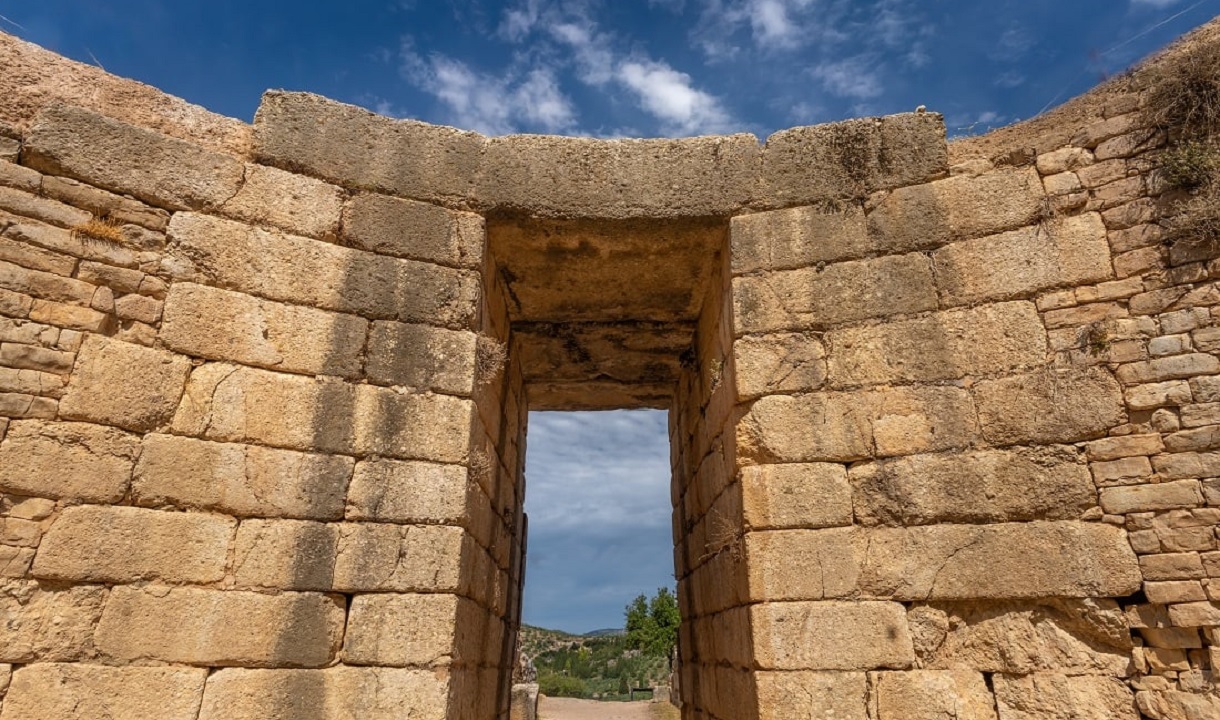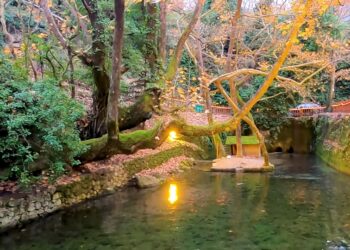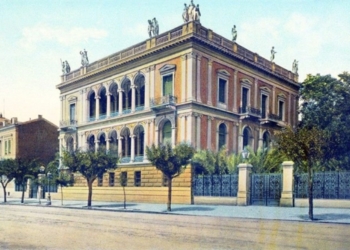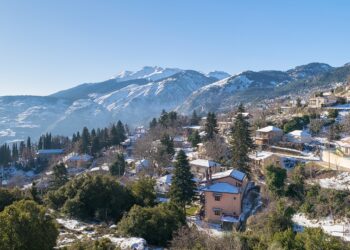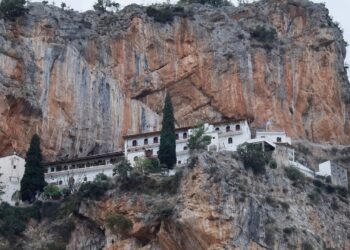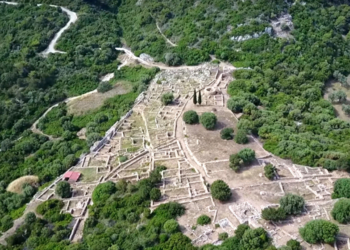On November 16, 1876, Heinrich Schliemann, an archaeologist often labeled as “mad” and adventurous by his contemporaries, sent an urgent telegram to King George I. He claimed, “I saw the face of Agamemnon.” This eccentric archaeologist had dedicated his life to finding the Treasury of Atreus and had finally encountered it. He further stated in his telegram, “I discovered a wealth of archaic artifacts made of pure gold within the tombs. These treasures could fill a large museum, making it the most extraordinary in the world, attracting thousands of international visitors to Greece for centuries to come.” The figure Schliemann claimed to have seen may not have been Agamemnon, but rather a king from Mycenae, three centuries prior. Regardless, his discovery was undeniably significant and invaluable.
Excursion to the Argosaronic Gulf: To Spetses for an unforgettable weekend
Mycenae: In the great kingdom of Agamemnon

The golden mask discovered by Schliemann, just three days before the conclusion of the excavation, is one of the most globally recognized finds from an archaeological dig. Alongside the mask, Schliemann unearthed a variety of other gold jewelry and everyday items belonging to the inhabitants of the Mycenaean kingdom. The majority of these artifacts are now displayed in the National Archaeological Museum of Athens.
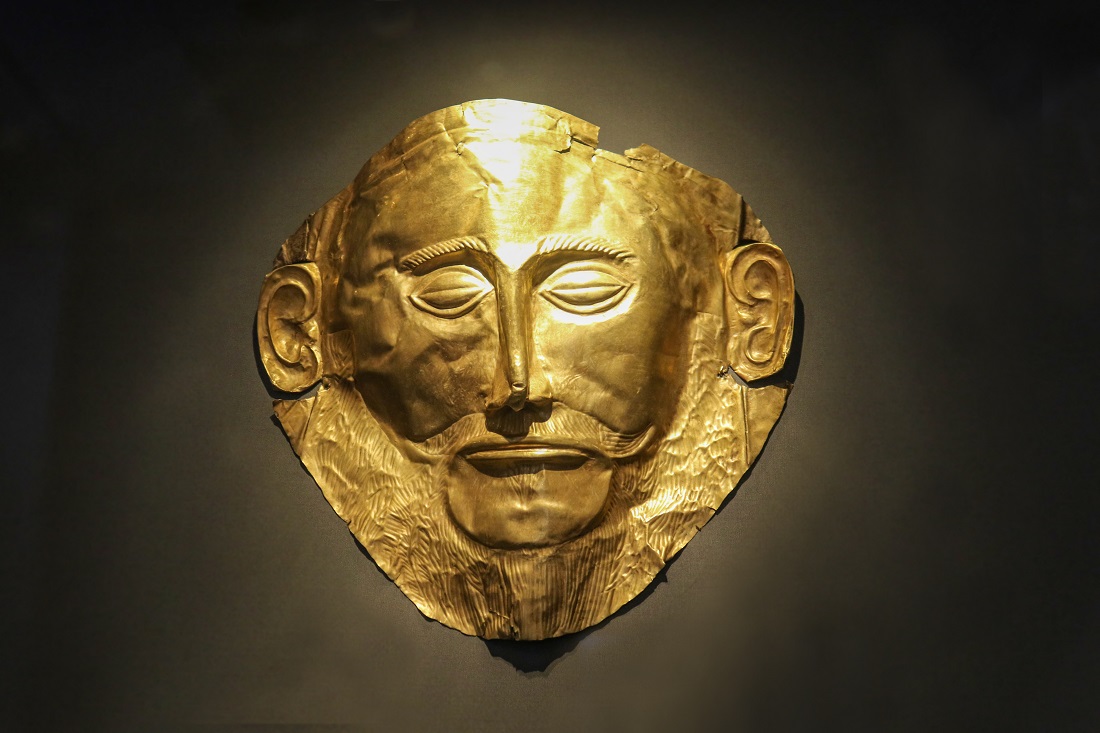
Mycenae, as is widely known, is one of Greece’s most significant archaeological sites today. The prehistoric acropolis stands on a rocky hill, with the entire area nestled under the towering peaks of Mount Evia. From the very first glimpse, Mycenae instills a sense of awe in its visitors.
Reflecting on its history, this hill has been inhabited since the Neolithic era and saw a period of prosperity during the late Bronze Age (1350-1200 BC). The region lent its name to a civilization that thrived across the Greek area, marking Mycenae as the birthplace of the Mycenaean civilization. This ancient Greek kingdom reached its zenith from 1600 to 1100 BC.
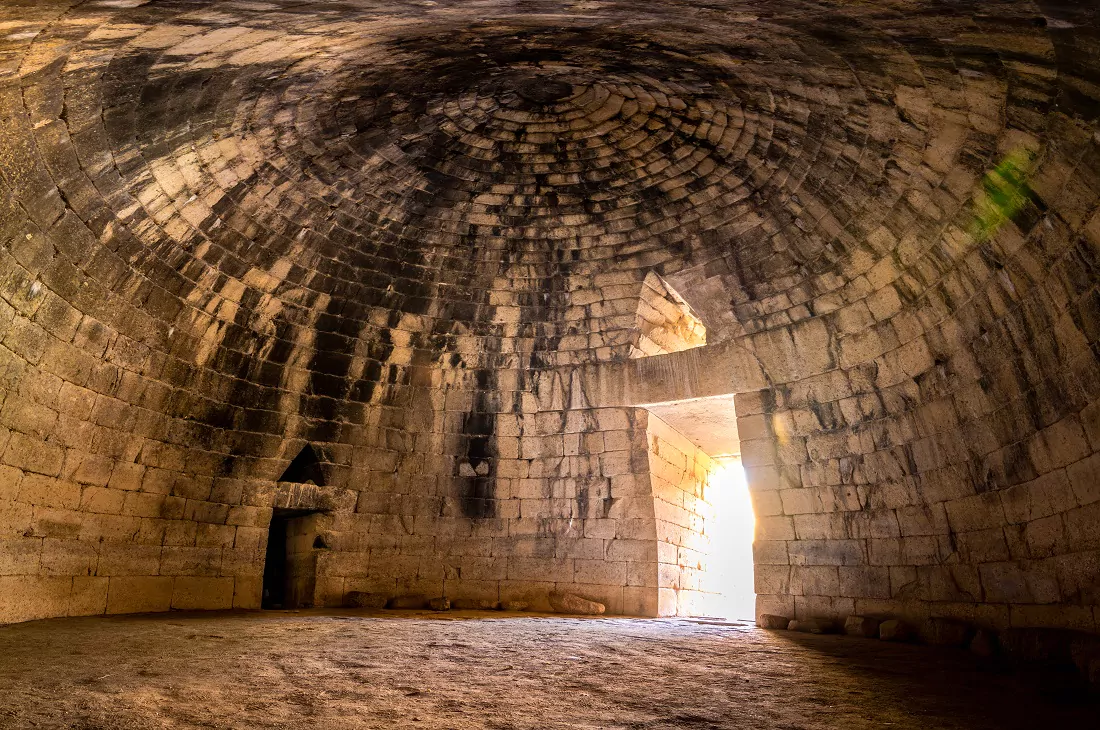
Today, the formidable walls of Mycenae, constructed from massive boulders, remain remarkably well-preserved. While Mycenae has basic tourist facilities in its vicinity, many visitors choose to stay in Nafplio, which offers a wider range of accommodation and entertainment options.
Travel to Mycenae: The history of the area
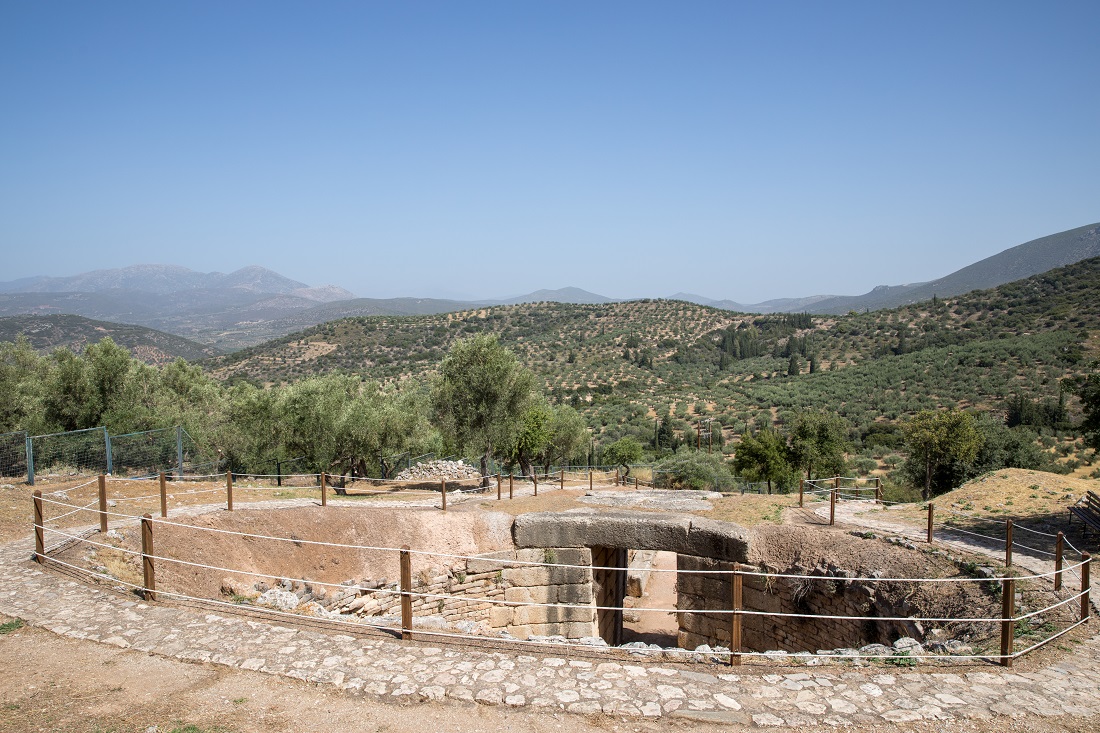
Mycenae, the kingdom of the mighty Agamemnon and, as per mythology, founded by Perseus, was the most significant and affluent center of its era. It boasted a substantial military fortress, regarded as the most crucial in southern Greece. The acropolis was renowned for its impressive Cyclopean walls, which drew admiration from around the globe. As one might expect, Mycenae is recognized as a UNESCO World Heritage Site.
This illustrious city, golden in its glory, was the realm of Atreus and his sons, Agamemnon and Menelaus, as well as all the Mycenaean kings who preceded them. Nestled between two hills, Prophet Elias (at 805 meters) and Sara (at 660 meters), the city offers a breathtaking view of the Argolic plain as you ascend towards the heart of the archaeological site after passing the ticket office.
It’s important to note that the artifacts found here are at least a thousand years older than what is typically considered “ancient” in Greece. So, don’t anticipate seeing impeccably crafted temples in pristine condition. However, if you allow your imagination and knowledge to guide you, you’ll truly appreciate the grandeur of the place you’re standing in.
Mycenae: What to see in the kingdom
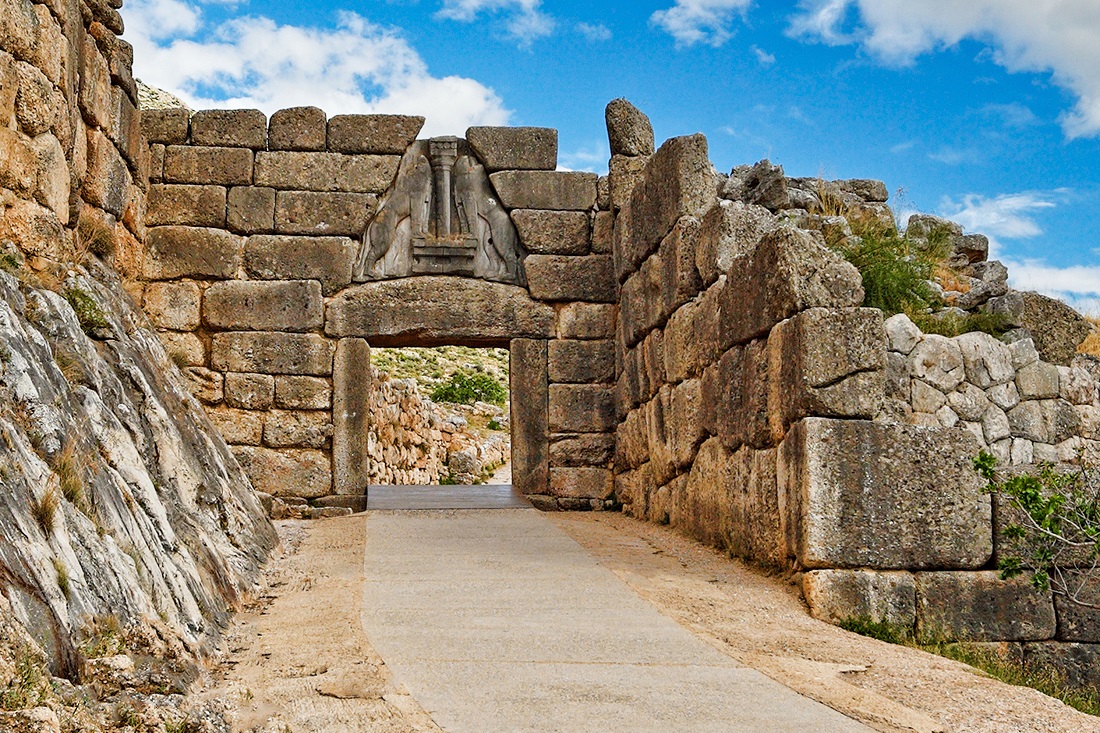
LION GATE
The Lion Gate serves as the main entrance and is a remarkable megalithic monument. Its lintel features a relief depiction of lions, making it one of the earliest examples of monumental sculpture in the western world, hence its name, the Lion Gate.
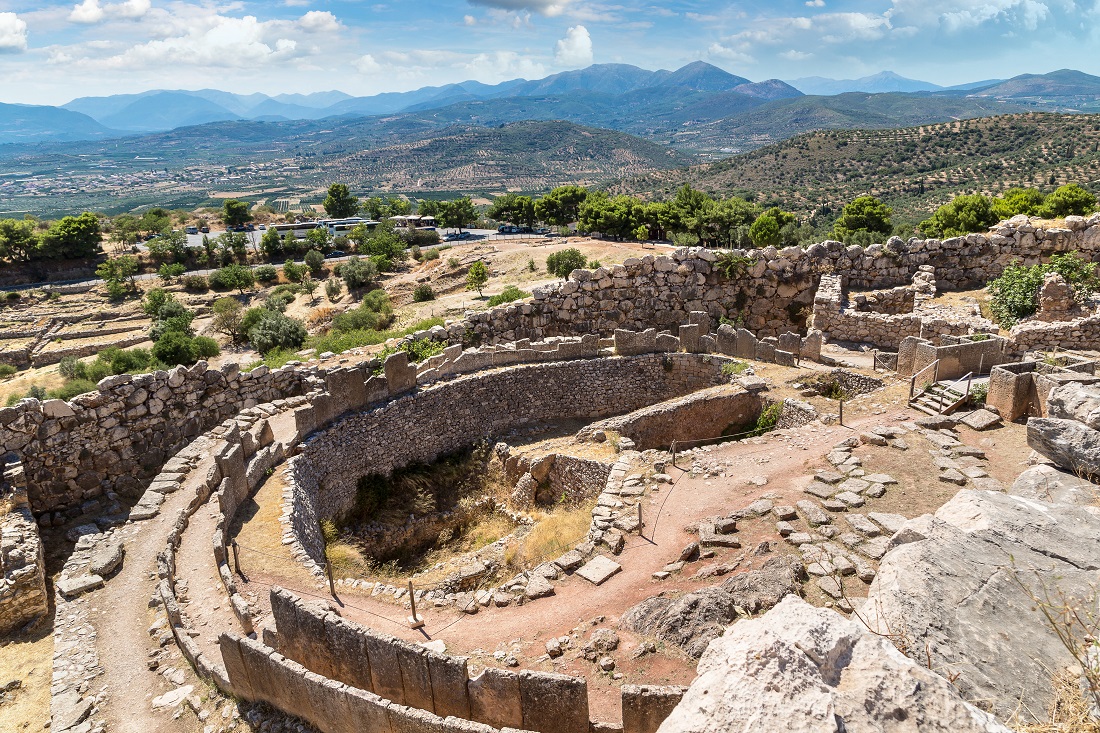
BURIAL CIRCLE A
‘Circle A’ is a burial site located just a few meters inside the acropolis. It’s a circular enclosure constructed from stone slabs set perpendicular to the ground. This site once housed one of the city’s oldest cemeteries, containing significant royal burials. It was here that Schliemann discovered the renowned pit tombs filled with rich golden offerings.
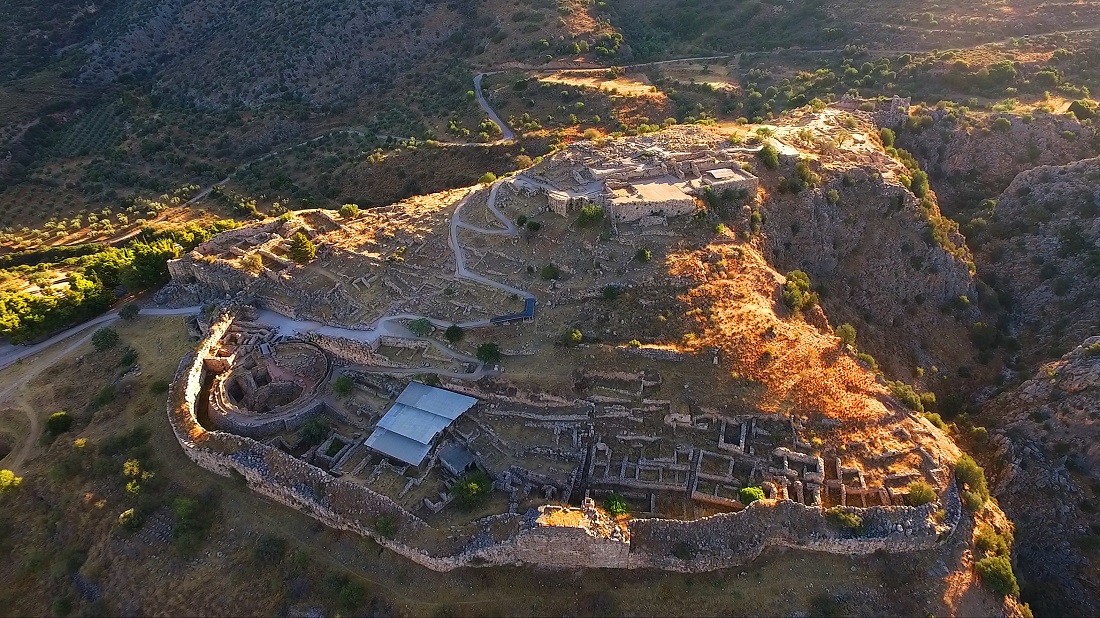
PALACE
The Palace is situated at the peak of the hill, accessible via the main cobblestone road. From the expansive plateau, which once housed the throne room, you can gaze out at the distant sea, much like the kings of Mycenae once did.
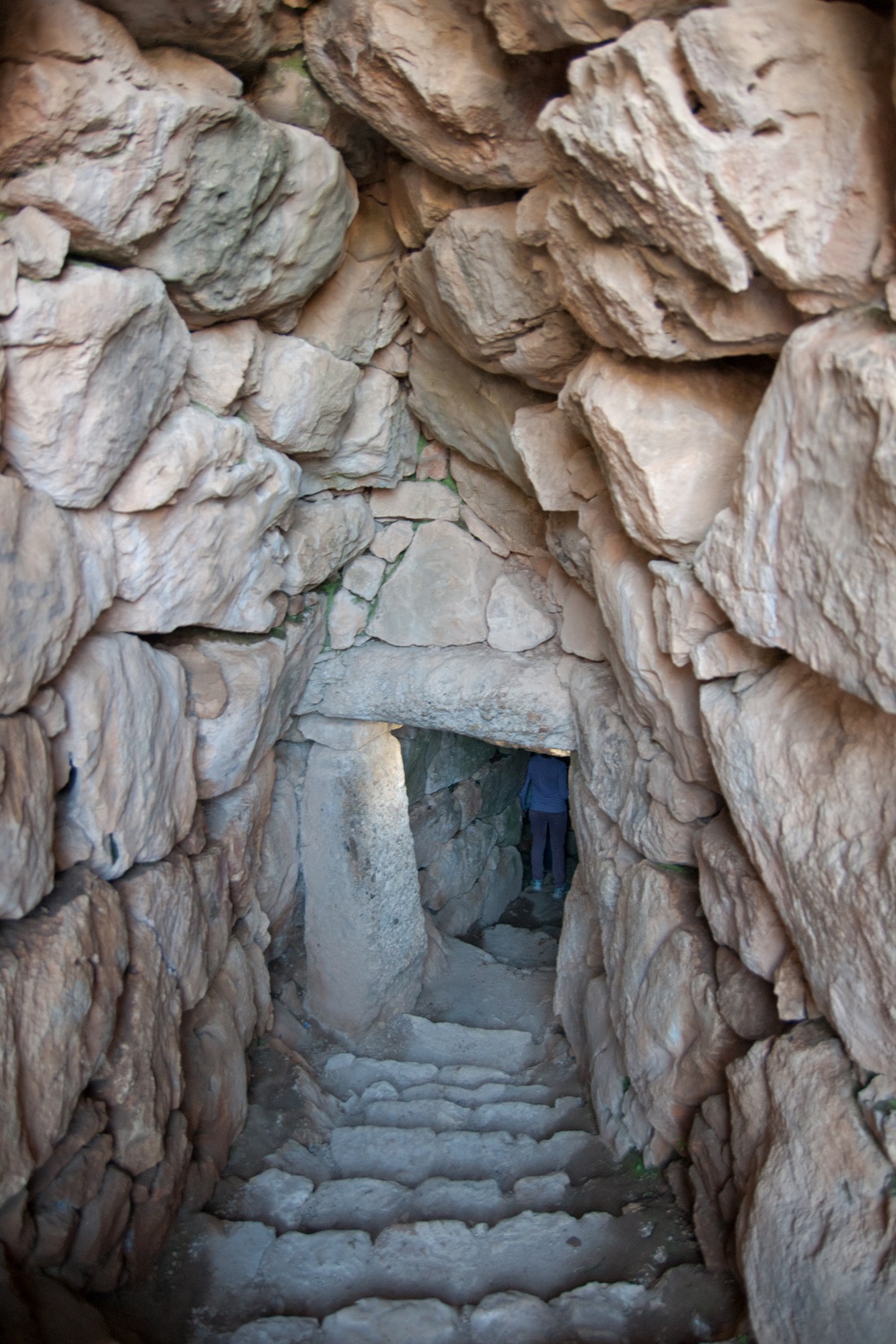
UNDERGROUND CISTERN
The Underground Cistern, located on the northern side of the acropolis, once provided the settlement with water. If you’re equipped with a flashlight, you can carefully descend the (slippery) steps and witness this prehistoric, technical marvel up close.
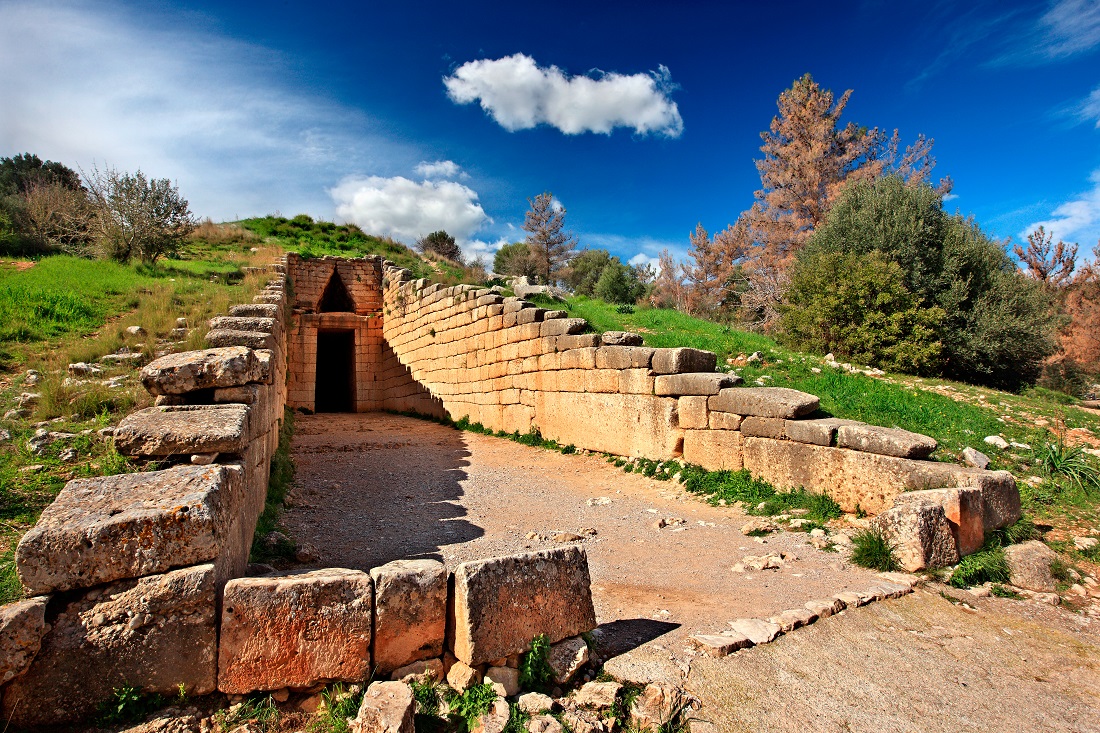
TOMBS
The Tholos Tombs of Clytemnestra and Aegisthus are situated outside the walls, while the most impressive Tholos Tomb in Greece, known as the Treasury of Atreus, is located about 200 meters outside the main archaeological site. All three monuments were constructed as the final resting places for members of the Mycenaean royal family. These tombs are referred to as ‘Tholos’ or ‘vaulted’ due to their burial chamber’s design – a large circular hall topped with a skillfully crafted dome. The impressive tombs reach a height of 13.5 meters, and a complete circular walk inside them spans nearly 15 meters.
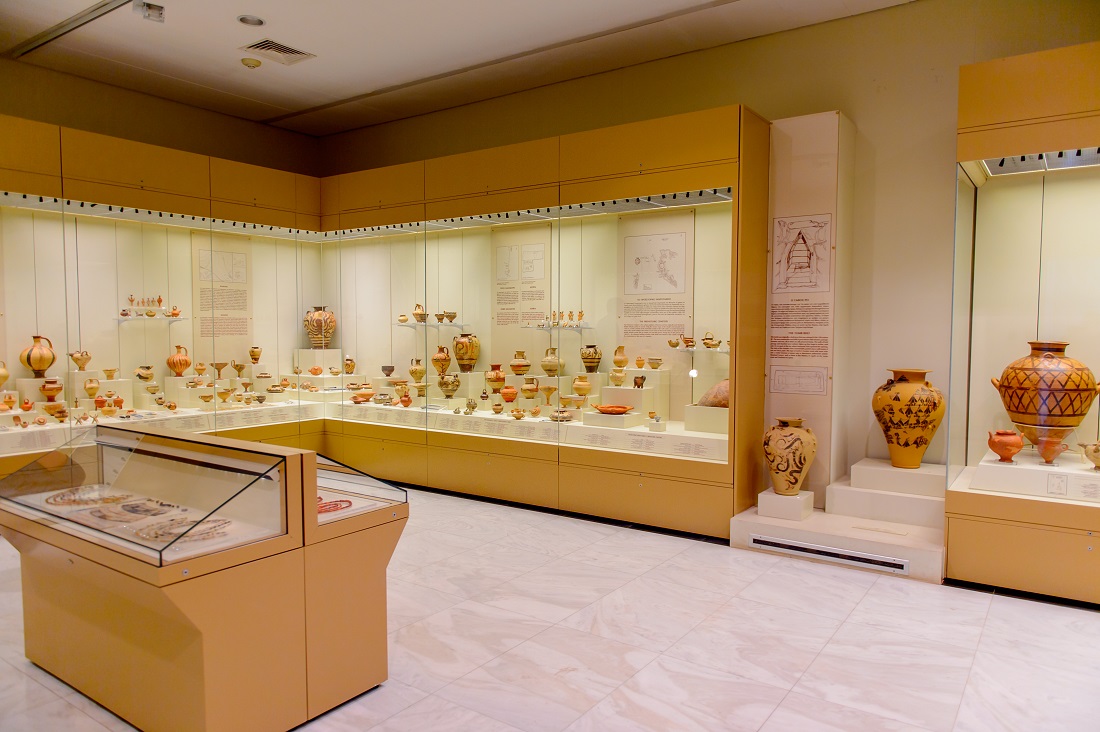
ARCHAEOLOGICAL MUSEUM
The Mycenae Archaeological Museum is located in a stone building near the ticket office, just before the entrance to the archaeological site. While many of its exhibits are replicas of the originals housed in the Athens Archaeological Museum, it also displays artifacts from the tombs in the broader Mycenae area. These are organized into thematic sections that provide insights into local life and burial customs. The museum also features a detailed timeline of excavations and scale models of the hill, offering visitors a comprehensive view of what the city of Atreus looked like during its prime.
A day trip to Mycenae: The trends you need to do
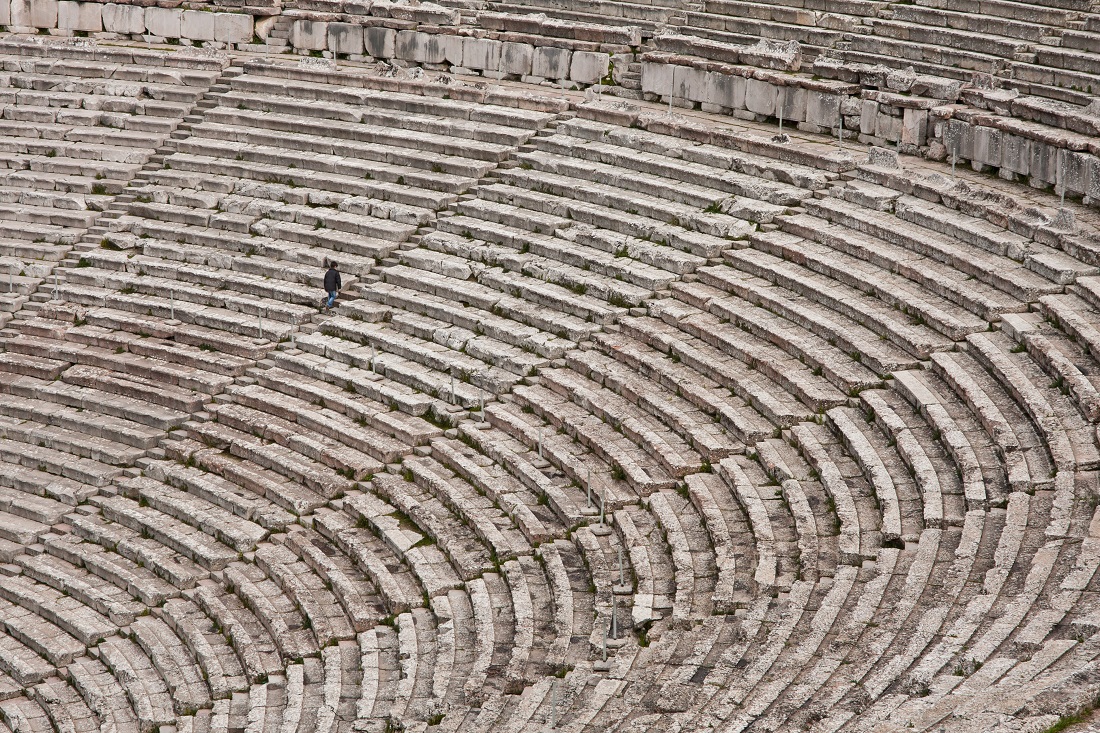
EPIDAURUS
A trip to Epidaurus, which is located 53 km from Mycenae, is home to the renowned Epidaurus Theater. This theater is the best-preserved example of a classical Greek theater. Known for its exceptional construction and superb acoustics, it’s considered the finest theater of antiquity. Constructed towards the end of the Classical Era, around 340 – 330 BC, it can accommodate up to 13,000 spectators.
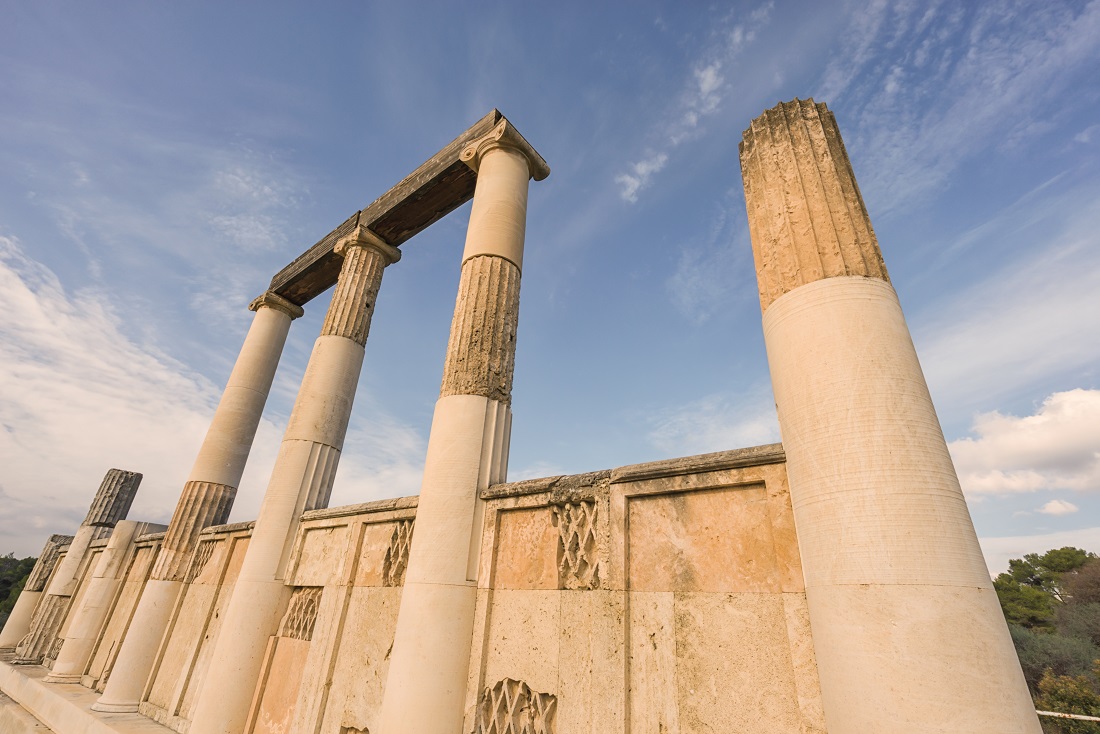
Epidaurus was once the site of the most significant Asclepieion in antiquity, renowned worldwide. All other Asclepieia across Greece and the Mediterranean, from Rome to the East, were considered dependents of the esteemed Sanctuary of Epidaurus and medical center. This is where Asclepius was first, albeit belatedly, honored as a god. According to historical sources, over 200 spas operated throughout the Eastern Mediterranean under his patronage. The monuments here are globally recognized masterpieces of ancient Greek art.
In general, the archaeological site of Epidaurus, much like Mycenae, is of equal importance and fully embodies the splendor of ancient Greek civilization. There’s also the lesser-known ancient sunken city of Epidaurus. On the road connecting Nafplio with Epidaurus, you’ll find the oldest preserved bridge in Europe.
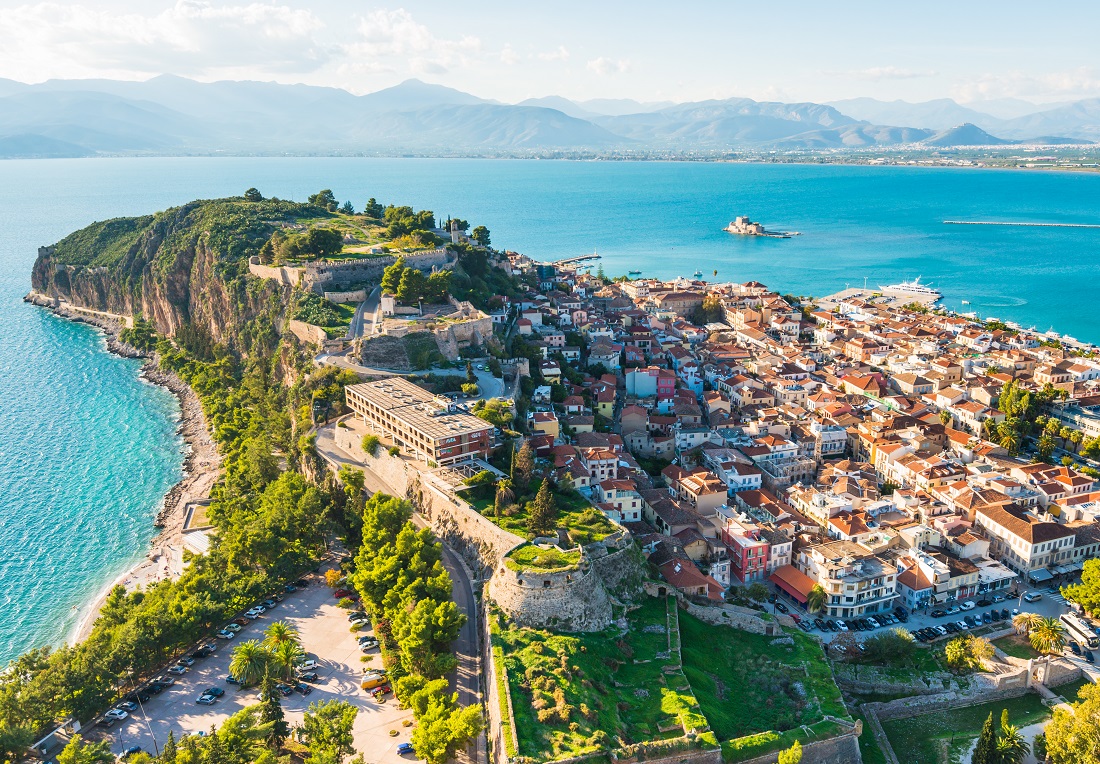
NAFPLIO
A trip to Nafplio,which is located just 25 kilometers from Mycenae, is arguably the most beautiful and romantic city in Argolida, and one of the most stunning in Greece. It’s a must-visit destination that many Greeks have visited at least once, if not multiple times, in their lives. Nafplio was the first capital of the Greek state in 1823 and remained so for eleven years. Its history dates back to antiquity, with its inhabitants participating in the Argonaut Expedition and the Trojan War. The city also prospered during the Byzantine era. Subsequent Frankish, Venetian, and Turkish conquerors have all left their mark here, which is evident in the city’s culture and architecture.
The cityscape is incredibly atmospheric, earning Nafplio the title of Greece’s most “romantic” city. Nafplio boasts ancient walls, medieval castles, Ottoman fountains, and Venetian architecture. It also offers numerous high-quality accommodation and entertainment options. You can explore everything Nafplio has to offer in just a few hours on a day trip.
The journey to Mycenae, located 120 km from the metropolis, can be undertaken as a day trip or combined with a two-day trip based in Nafplio. Regardless, it’s an excursion with a strong archaeological focus that is a must-do. Its educational value is even greater if you have children. So, on the first weekend of beautiful weather, awaken your inner Schliemann and add it to your itinerary.
How to get Mycenae from Athens
Travel to Greece – Google News – Follow us
Read also:


